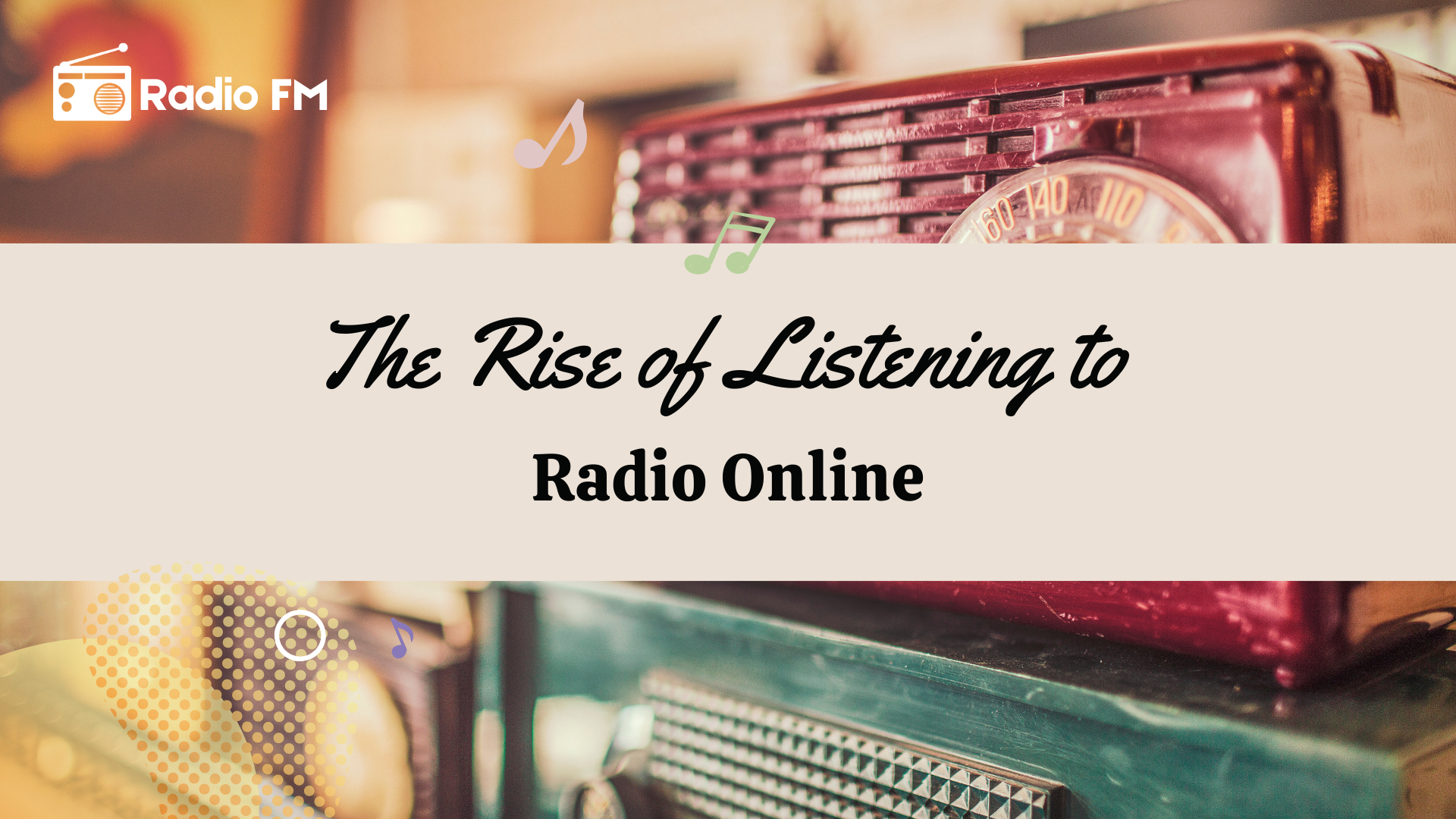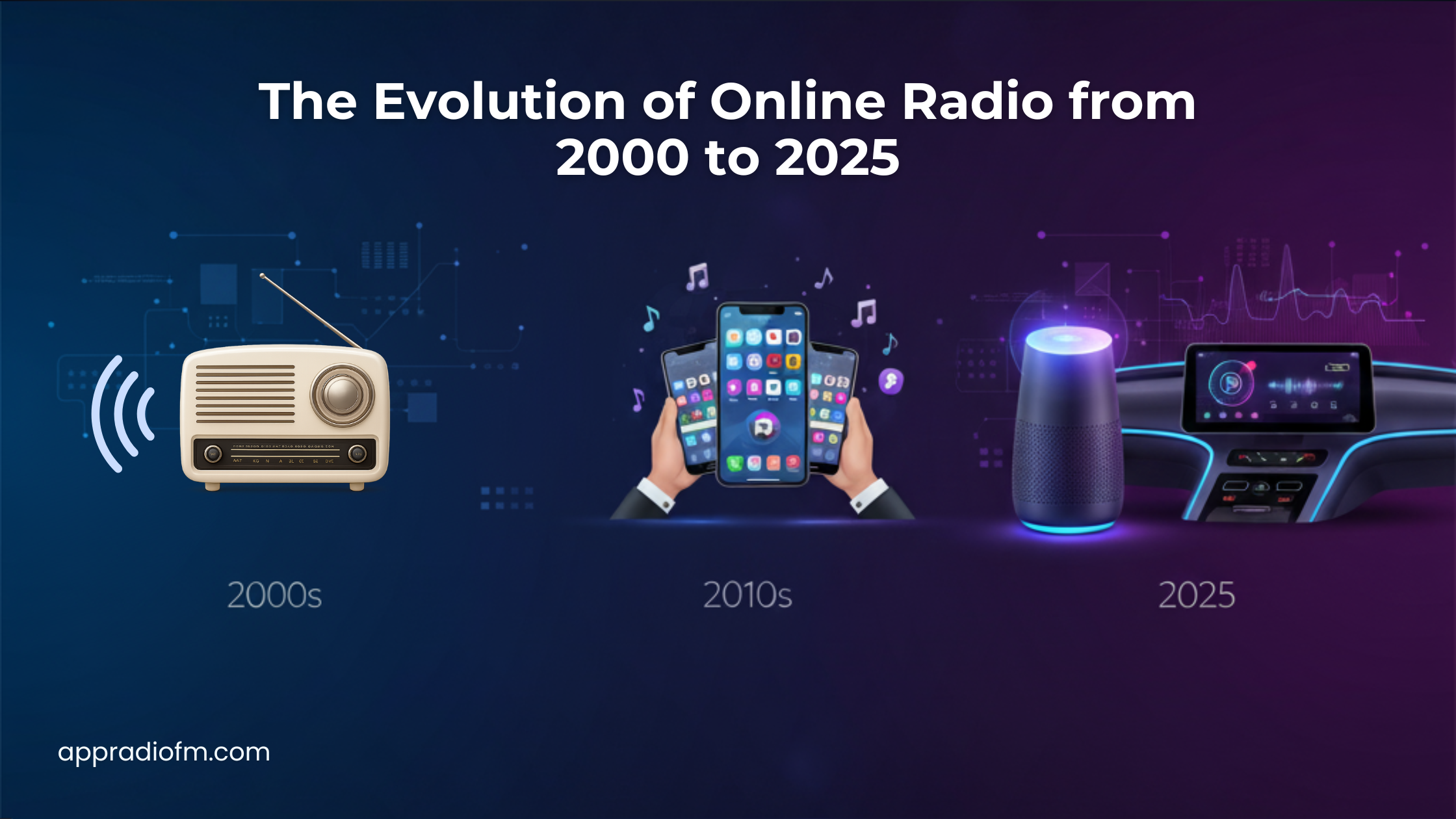
Rise of Online Radio
Radio is a medium that has been around for over 100 years and it's still going strong. For many people, radio provides an easy way to enjoy their favorite songs and discover new music.
History, trends, and opportunities in online radio
Radio has been around for a long time and with the introduction of new technology, and with the internet and its vast array of different channels to choose from, we're seeing that people are still listening to the radio. For many people, the radio provides an easy way to enjoy their favorite songs and discover new music.
How is Online Radio the Future of the Radio Broadcasting Industry?
With the rise of streaming services, people are still turning to their internet-connected radios for their favorite tunes. With so many stations to choose from, there's something for everyone no matter what your tastes are! Furthermore, with each day more people are tuning in through streaming services. These streaming services give listeners the opportunity to choose the song they want to listen to. This isn't an option on terrestrial radio stations or network television. However, despite this shift amongst listeners, it's important not to forget about traditional broadcasting methods.
Some stats about the online radio
With internet speeds increasing all over the world, more and more people are accessing FM/AM broadcasts through streaming websites. In fact, according to market research and statistics by Edison Research and Triton Digital, about 60% of the U.S.'s population listens to terrestrial radio weekly, which is a small decline from years past. At the end of the day though, it's clear that there really isn't anything like traditional radio broadcasting. As the years go by, it will be interesting to see how technology changes and advances as well as how people's listening habits change. In particular, the growing trend of listening to music on smartwatches will have a big impact.
The level-headed journey of online radio
Radio has been around for a long time. Since the early 20th century in fact. In 1910, American inventor Lee DeForest transmitted the first live voice transmissions. He invented this technology at his station 2XG which he built with his son on the roof of his home in New York City. This was an amazing breakthrough for radio communications, but it's hard to imagine how excited people were back then to listen to radio stations without having to be within proximity. Just a few decades later, in 1933, the BBC began transmitting the first public regular high-definition television service in Europe.
TV sets in Britain were a luxury item and expensive for many people. With radio being free to listen to at home, there was no real impetus from the British population to adopt TV technology just yet. In 1938, television broadcasting in the U.S. began with regular programming in New York City and Schenectady, New York. The first commercial TV broadcasts were around 10 to 12 inches tall - which is only slightly taller than most modern smartphones! Television has come a long way since these early days, but even though it's been around for so long, TV is still just one way to watch video.
In contrast, radio has evolved a great deal over the years as well. In fact, since the year 2000, according to a recent market report by Edison Research and Triton Digital called The Infinite Dial 2014, more people have been tuning into online radio than any other medium.
Today, people can listen to their favorite radio stations online through streaming services like Pandora, Radio FM, and Spotify. Listeners are able to tune in no matter what device they have, whether it's a PC or laptop, tablet, smartphone, or smart TV. They can stay at home or go on the go. And now with the newest smartwatches hitting the market, listeners can even tune in wirelessly from their wrists.
What do the reports suggest?
In fact, a recent report by Edison Research and Triton Digital found that a third of Americans who stream online music do so using a smartwatch - up from only eight percent last year. According to Nielsen, the average American spends about 10 hours listening to various types of audio each week. That's more than one-third of their waking hours! With so many different ways to listen, it seems like the time people spend tuned in isn't going anywhere any time soon. It probably doesn't hurt that there are so many new and exciting stations to choose from, giving listeners an infinite number of options for their favorite tunes. Everyone has their own type of music that they like, whether it's rock, dance, country, or classical. There are even niche stations catering specifically to some listeners' unique tastes. For example, the Hip Hop Nation station on Radio FM is personalized for hip hop fans who like rap and R&B. So, it all comes down to choices and preferences.

.png)


